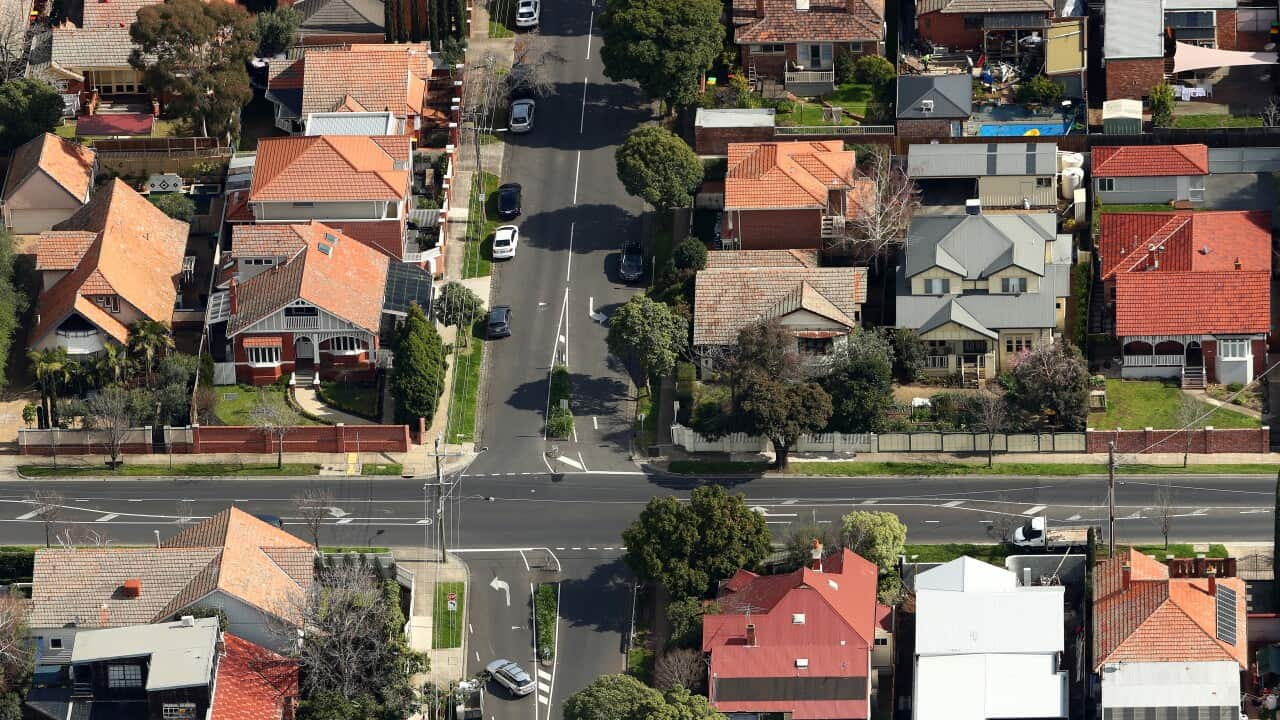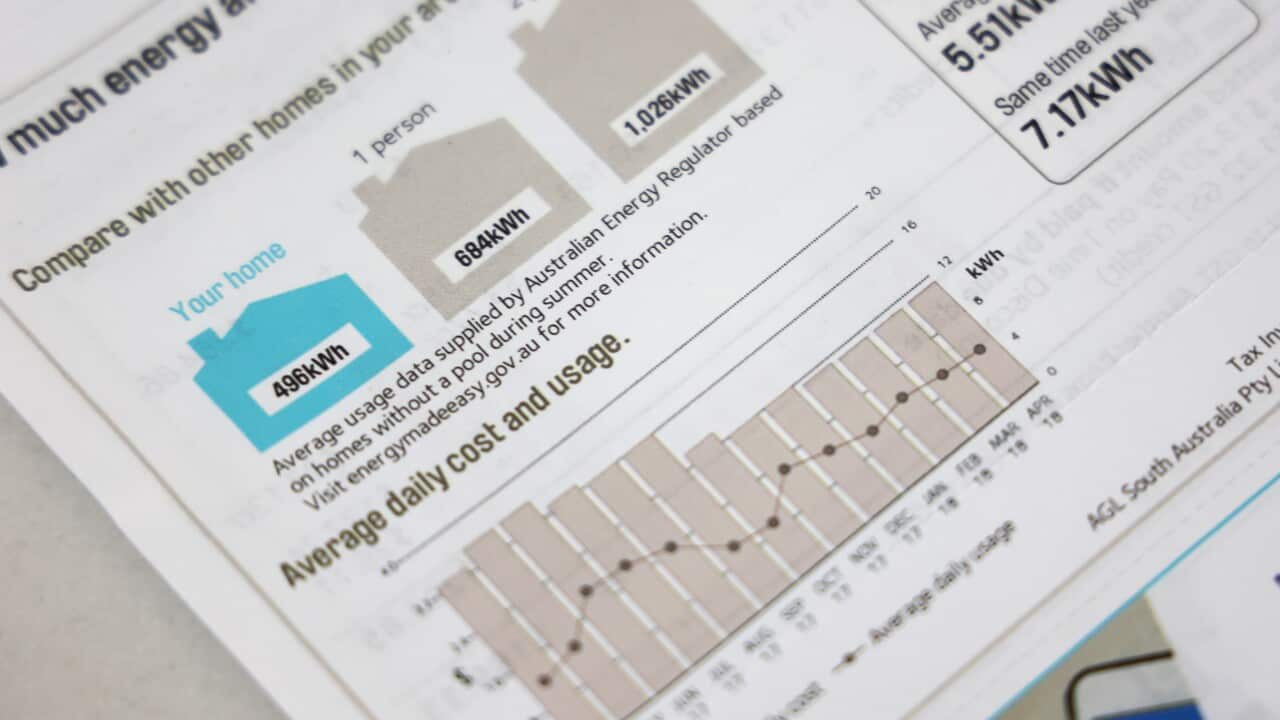In Melbourne, there’s a building that creates more energy on a yearly basis than its residents consume.
Property developer Tripple has spent $2 million gutting a 1960s apartment block in the inner city suburb of Fitzroy to deliver what is the nation's “first energy-plus retrofit”, according to Ross Harding, an engineer and principal of research firm Finding Infinity.
In order to achieve this, Harding said only "the most cost-effective energy upgrades" were installed, from airtight render and blow-in wall insulation to solar panels and a heat-capture ventilation system.
The energy upgrades alone cost $400,000, but Harding said there are savings to be made elsewhere.
“We think energy bills could go from $35 a week down to $2 a week, and maybe eventually zero.”

The Wilam Ngarrang building in the inner Melbourne suburb of Fitzroy generates more energy than its residents use each year. Source: Supplied / Tripple
Harding is on a mission to transform Melbourne: he wants to retrofit one million buildings across the city.
“We think the cost to do that would be about $55 billion…. But it would reduce Melbourne’s carbon footprint by about 55 per cent,” he said.
“We have a really amazing opportunity in Australia to introduce mandatory retrofits of all buildings.”
While it might sound extremely ambitious, Energy Minister Chris Bowen concedes “retrofits will play a really important role on the path to net zero.”
A $1.6 billion energy savings plan
The to drive down household and business energy costs and make them cheaper to run.
It offered $1 billion to households in cheap loans for energy upgrades, $310 million in tax deductions for businesses that invest in renewable energy, and $300 million in funding to electrify public housing – to be matched by the states.
More than 100,000 of the government’s “low-interest loans” will be accessible via the Clean Energy Finance Corporation, though applications are not yet open.
While eligibility criteria are yet to be finalised, Bowen said applicants could use the loan for “pretty much anything that reduces your emissions”.
That could include solar, batteries, insulation, double-glazing, air-tight renders, and more.
Rooftop solar expansion needed
On a sunny winter’s day in Sydney, the Zinc Building in Alexandria is generating more electricity than its residents consume.
A 75-kilowatt solar system was installed last year at a cost of $140,000, split between 43 units. The transition was spearheaded by resident and energy enthusiast Nathan Hage.
“Since we got solar, this apartment’s consumption is down by 60 per cent,” he said.

Nathan Hage has spearheaded a transition to solar at the apartment block in Alexandria, Sydney, where he lives. Source: SBS News
“The biggest stumbling block was figuring out how to actually share the solar,” he said.
Australia has seen an enthusiastic uptake of solar in standalone homes, but apartment dwellers have mostly missed out.
Until recently, it's been impossible to split power from one solar system to individual units. But Australian company Allume has found a solution.
Electricity generated from the solar panels is sent to the building’s inverter, where it’s fed through to the SolShare unit. The technology can in turn split the power to up to 15 individual apartment meters.
But innovation isn’t cheap. A single unit costs $12,500.

While one in three Australian houses have solar panels, apartment blocks have mostly missed out. Not this apartment block in Alexandria, though. Source: Supplied
Bowen agrees that rooftop solar must expand beyond those who own standalone homes.
“If we are really going to make this journey, then renters and apartment dwellers need to really be at the forefront of our considerations going forward,” he said.

Energy and Climate Change Minister Chris Bowen says retrofitting apartments with solar panels is “an important part of the journey to net-zero" Source: AAP / Lukas Coch
‘No matter how much you heat, it makes no difference’
The average Australian house has an energy efficiency rating of 1.8 stars out of 10, according to the Nationwide House Energy Rating Scheme.
That means millions of people live in houses that are too hot in summer and too cold in winter.
In Canberra, renter Michi Moses’ living room is 7 degrees Celsius. That’s even as Australia experienced its warmest July on record.
“Last week, it got down to four degrees in the living room… so I guess seven degrees is warm in comparison,” she said.

Michi Moses is an architect who specialises in energy efficiency solutions. She uses a thermal camera to identify blue areas or “cold spots” around architraves, which hide the gap between a wall and door or window frames. Source: SBS News
Moses is also an architect who specialises in energy efficiency solutions. She said poor insulation and air leakage are common problems.
Using a thermal camera to demonstrate, she referenced blue areas or “cold spots” around architraves, which hide the gap between a wall and door or window frames.
“You can see the gaps in the insulation as well. All that hot air is just escaping,” she said.
“So, no matter how much you heat, it makes no difference.”
But there are some simple solutions.
“People often assume that retrofits will cost a lot of money, but really there are basic things we can do like draught sealing and adding insulation that are very effective and will give you the most bang for your buck,” Moses said.
As a renter, any works are for her landlord to carry out – and pay for.
Could landlords be forced to make upgrades?
That’s something the chief executive of advocacy group Better Renting, Joel Dignam, would like to see mandated.
“We’d like to see the state and territory governments set minimum energy efficiency standards for rentals and require landlords to take positive action to get their properties up to standard if they don’t meet those standards,” he said.
The ACT is leading the way, legislating minimum roof insulation standards in rental homes.
While that’s not a federal policy, as renter rights are a state issue, Bowen conceded more regulation is needed.
“That regulatory space around landlords is something that would be a discussion point over coming years, but no one’s rushing to make that policy choice any time soon,” he said.
Dignam said those discussions are needed urgently.
“Renters are about eight million people in Australia, and I think politicians are cognisant of the fact that this is a growing group that’s pretty fed up with some of the neglect that we have seen,” he said.
“There’s a growing appetite for action and interest in taking action from governments. What we want to see is real action, not just gestures.”











